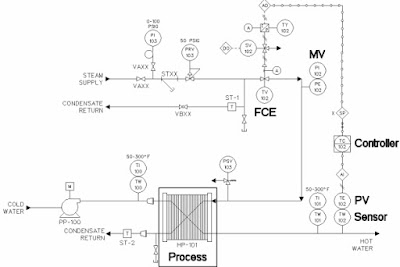What is transducer:
A transducer is a device which transforms a non-electrical physical quantity (i.e. temperature, sound or light) into an electrical signal (i.e. voltage, current, capacity…)
(or simply)
A transducer is a device that converts energy from one form to another.
Principle of operation :
The transducer has basically two main components : 1. Sensing Element
2. Transduction Element
1. Sensing Element:
The physical quantity or its rate of change is sensed and responded to by this part of the
transducer .
2. Transduction Element:
The output of the sensing element is passed on to the transduction element. This element is
responsible for converting the non-electrical signal into its proportional electrical signal. There are certain cases when the transduction element itself performs both the action of transduction and sensing. The best example of such a type transducer is a thermocouple.
3.Input :
Some examples of input are : Resistance ,capacitance , inductance, heat
4. Output :
Some examples of output are : voltage , force , displacement , pressure ,current.
Types of Transducer:
There are of many different types of transducer, they can be classified based on various criteria as:
Types of Transducer based on Quantity to be Measured
- Temperature Transducer
- Pressure transducers
- Displacement transducers
- Flow transducers
Types of Transducer based on the Principle of Operation
- Photovoltaic
- Piezoelectric
- Mutual Induction
- Electromagnetic
- Photoconductors
Types of Transducer based on Whether an External Power Source is required or not
- Active Transducers
- Passive Transducers
- Active Transducers:
Active transducers are those which do not require any power source for their operation. They work on the energy conversion principle. They produce an electrical signal proportional to the input (physical quantity). Some of the active transducers are
- Thermocouple
- Piezoelectric transducer
- Photo-voltaic Cell
- Passive Transducers:
Transducers which require external power supply for their operation is called passive transducers. They produce an output signal in the form of some variation in resistance, capacitance or any other electrical parameter, which than has to be converted to an equivalent current or voltage signal.
- Light Dependent Resistor
- Strain Gauge
- Resistance thermometer
- Themistor
- Variable capacitance pressure gauge
- Dielectric Gauge
- Ionisation Chamber
- Photo-emissive cell
Basic requirements of Transducers:
Transducers should meet the basic requirements of
- Ruggedness
- Linearity
- Repeatability
- High output signal quality
- High reliability and stability
- No hysteresis
1. Ruggedness: It should be capable to withstand over loads.
2. Linearity: Its Input and output characteristics should be linear.
3. Repeatability: It should give same output for the same iput, If applied again and again.
4. High output signal quality: The output should have high signal noise ratio
Active transducers are those which do not require any power source for their operation. They work on the energy conversion principle. They produce an electrical signal proportional to the input (physical quantity). Some of the active transducers are
- Thermocouple
- Piezoelectric transducer
- Photo-voltaic Cell
- Passive Transducers:
Transducers which require external power supply for their operation is called passive transducers. They produce an output signal in the form of some variation in resistance, capacitance or any other electrical parameter, which than has to be converted to an equivalent current or voltage signal.
- Light Dependent Resistor
- Strain Gauge
- Resistance thermometer
- Themistor
- Variable capacitance pressure gauge
- Dielectric Gauge
- Ionisation Chamber
- Photo-emissive cell
Basic requirements of Transducers:
Transducers should meet the basic requirements of
- Ruggedness
- Linearity
- Repeatability
- High output signal quality
- High reliability and stability
- No hysteresis
1. Ruggedness: It should be capable to withstand over loads.
Transducers which require external power supply for their operation is called passive transducers. They produce an output signal in the form of some variation in resistance, capacitance or any other electrical parameter, which than has to be converted to an equivalent current or voltage signal.
- Light Dependent Resistor
- Strain Gauge
- Resistance thermometer
- Themistor
- Variable capacitance pressure gauge
- Dielectric Gauge
- Ionisation Chamber
- Photo-emissive cell
Basic requirements of Transducers:
- Ruggedness
- Linearity
- Repeatability
- High output signal quality
- High reliability and stability
- No hysteresis




























